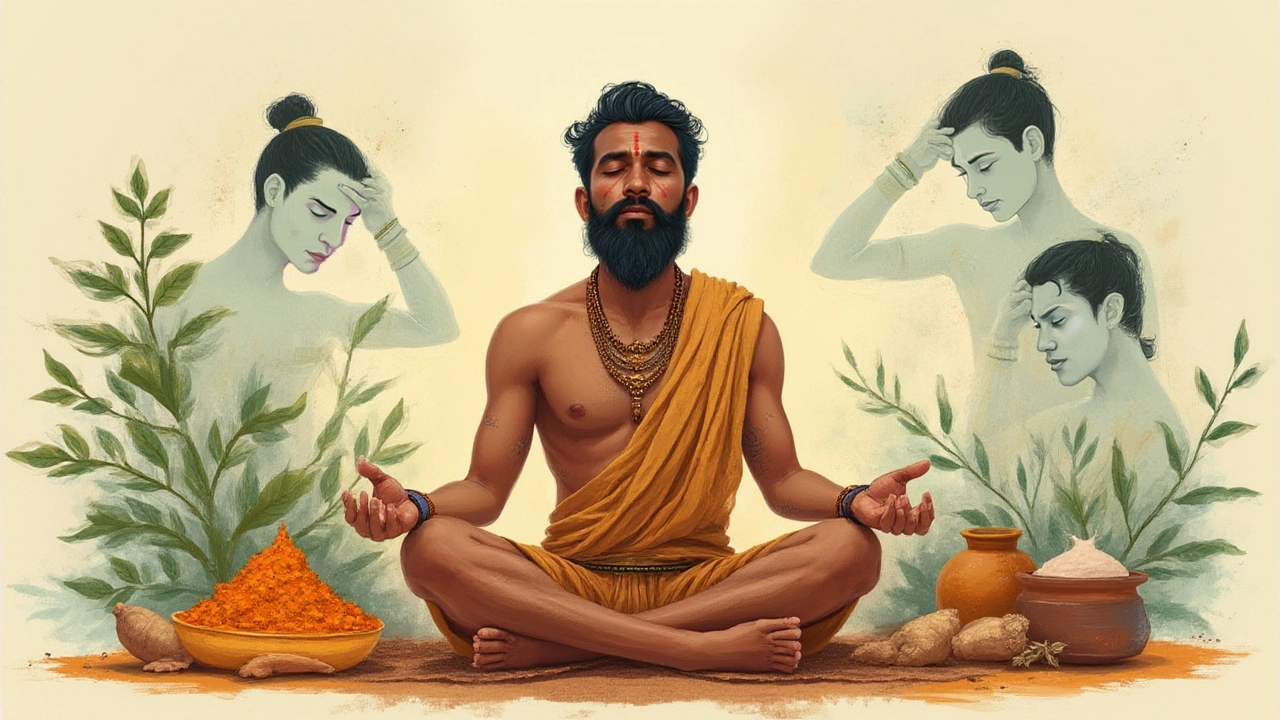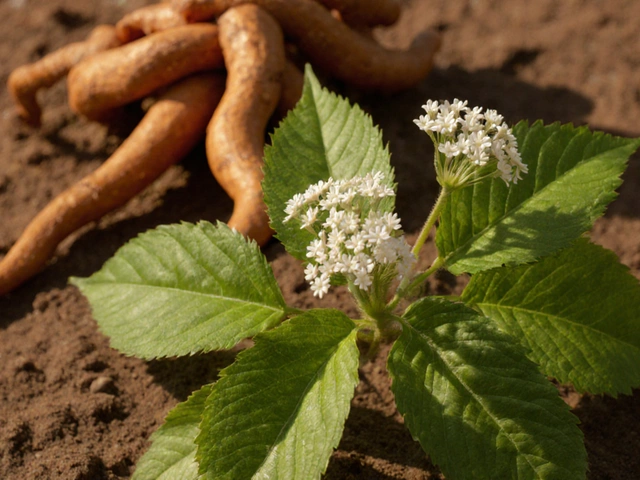- Home
- ::
- Ayurvedic Cleanse Side Effects: What to Expect and How to Stay Safe

Ayurvedic Cleanse Side Effects: What to Expect and How to Stay Safe
There’s something strangely appealing about the promise of starting over, hitting reset, and shedding old habits. That’s exactly what pulls people into the world of Ayurvedic cleanses—stories of glowing skin, boundless energy, and feeling lighter than ever. But here’s what they often skip over: the stuff that actually happens to your body along the way. Ayurvedic cleanses aren’t just herbal teas and massages. They can turn your stomach, cloud your mind, and sometimes leave you racing for the nearest bathroom. Before plunging in, it’s worth knowing what side effects are common, what’s rare, and when things can get risky.
The Essence of an Ayurvedic Cleanse
Ayurveda, India’s ancient system of natural healing, isn’t just a wellness trend—it’s thousands of years old, with traditions handed down long before kale became cool. An Ayurvedic cleanse usually means getting rid of “ama,” described as metabolic waste or toxins that clog up your body. A classic cleanse, called Panchakarma, involves a five-step process using herbal medicines, therapeutic vomiting or purging, enemas, oil massages, and specific diets. The process can last from a few days to a few weeks, depending on how deep you want to go or how adventurous (or reckless) you might be.
The main idea? Strip away what’s not needed, support what works, and kick-start your body’s natural healing. But cleansing isn’t a Sunday picnic. Restrictive diets, strong oils, and powerful herbs interact with your system—and not always gently. Your digestive tract, liver, kidneys, and even your mind can react in surprising ways.
Modern clinics offering Panchakarma in India and abroad have seen a steady rise in visitors. In Kerala alone, the state health department reported a 40% increase in wellness tourists in 2023, many seeking Ayurvedic detox. But doctors at the National Institute of Ayurveda say nearly 18% of first-time patients report at least one mild side effect during cleanses, with about 3% needing medical attention for more serious reactions. Clearly, an Ayurvedic cleanse isn’t something to take lightly.
Typical Side Effects: What Most People Experience
If you’re picturing a week of feeling lighter, leaner, and happier, press pause. Most people—even those “in tune” with their bodies—grapple with at least a few detox symptoms. Fatigue tops the list. Your calorie intake usually plummets, often on simple foods like kitchari (a rice and lentil porridge), so you’re running on empty. Hunger pangs and a foggy brain become familiar companions.
Digestive system drama isn’t rare, either. Many report bloating, gas, or even loose stools. This isn’t just a side note; some herbs and oils prescribed in Ayurvedic cleanses are mild laxatives or diuretics. Guggal, triphala, and castor oil can all speed things up. If you’re not used to these ingredients, your body will let you know.
Headaches, irritability, and mood swings can sneak up, thanks to caffeine withdrawal from giving up coffee or tea, lower blood sugar, and general stress. If you usually start your morning with a double espresso, expect the next few days to feel rough. Nausea is another guest in the party, especially if you’re following more intense versions like Vamana (therapeutic vomiting).
Skin flare-ups occasionally happen too, as the body “pushes out” impurities. Don’t be shocked if you notice a few pimples or rashes before your skin gets that promised glow.
| Symptom | % Cleansers Experiencing |
|---|---|
| Fatigue | 68% |
| Digestive Upset | 54% |
| Headaches | 41% |
| Nausea | 26% |
| Skin Reactions | 19% |
These aren’t just numbers—ask anyone who’s completed an Ayurvedic cleanse, and they’ll probably have a story.

Less Common or Serious Risks
For most people, symptoms fade after a day or two, but sometimes things get bumpy. Persistent vomiting, severe dehydration, dangerously low blood sugar, or intense abdominal pain are big red flags. These aren’t normal cleanse effects—they’re signs something’s wrong.
The legendary ghee phase—where you eat increasing amounts of clarified butter to “loosen” toxins—can cause nausea or even trigger gallbladder attacks in folks with a history of stones. Herbal formulations, including triphala and senna, occasionally set off allergic reactions or, in rare cases, drop your electrolytes so low it’s dangerous.
Some published reports detail hospitalizations related to unsupervised Panchakarma. In 2021, a study in the Indian Journal of Medical Research reviewed 200 Panchakarma participants at a Mumbai clinic. About 4% ended up in the ER with severe diarrhea, low sodium, or liver enzyme spikes. Most recovered within 24 hours, but not everyone was so lucky.
For anyone with chronic health issues—like diabetes, heart disease, or autoimmune conditions—the risk goes up. Fasting or restrictive diets can disrupt medications, spike or crash blood pressure, or send blood sugar on a rollercoaster. Ayurveda practitioners always warn against DIY cleanses if you’re on prescription drugs because of unpredictable interactions.
The message is clear: Ayurvedic cleanses aren’t a substitute for medical care, and they can trigger side effects you might not be ready for.
Who Should Skip an Ayurvedic Cleanse?
Certain groups really shouldn’t mess with these routines. Pregnant and breastfeeding women, kids, anyone recovering from major surgery, or people with eating disorders can run into real trouble. After all, when you’re growing a baby, healing, or managing mental health, you need steady nutrition, not waves of fasting and purging.
If you have allergies to nuts, dairy, or specific herbs, pay extra attention—many traditional Ayurvedic recipes use these ingredients. Work stress or mental health issues? Suddenly restricting food or going through intense bodily purges can seriously backfire and amplify symptoms of depression or anxiety.
Also, think about your lifestyle. If you’ve got a demanding job, kids at home, or just can’t take a quiet week to yourself, trying an intense cleanse can just make everything harder. Ayurvedic therapies often require rest, reflection, and a calm environment—all hard to get if you’re living out of a suitcase or working double shifts.
If you fall into any of these categories, consult a qualified Ayurveda practitioner or your regular doctor before starting. Your body and mind will thank you.

How to Minimize Side Effects and Get the Most Out of Your Cleanse
You don’t have to swear off Ayurvedic detox forever. Plenty of people swear by gentle versions that fit into real life. Here’s how to cut your risk of side effects:
- Pick a quiet time: Trying to cleanse while prepping for a big deadline is just asking for trouble. Choose a week where you can actually rest.
- Ease in and out: Sudden changes shock your system. Ramp down caffeine, sugar, and heavy foods a week before. Return to your normal diet gradually.
- Stay hydrated: Water, herbal teas, and warm broths make a big difference. Dehydration is behind many of the worst side effects.
- Work with an expert: There’s a reason Panchakarma is done with supervision. Find a practitioner with real credentials, not just a catchy Instagram profile.
- Listen to your body: If you’re wiped out or in pain, stop. There’s no prize for making it to the finish line feeling worse.
- Skip intense cleanses if you’re sick or on medication: Especially if you have diabetes, heart disease, or take prescription drugs—herbal remedies can interact in weird ways.
- Eat mindfully afterwards: Don’t bounce from kitchari to cheeseburgers. Give your gut some time to readjust.
People often try an Ayurvedic cleanse because they want to reset, feel lighter, and “start fresh.” And sometimes, that’s exactly what they get. But keep in mind that Ayurvedic cleanse might throw a curveball or two your way before you see those benefits. Symptoms from mild headaches to major digestive problems are part of the territory. Good planning, honest self-assessment, and professional guidance can make all the difference between a life-changing ritual and a not-so-fun ER visit.
Ayurveda has real power when it’s done right. Mix traditional wisdom with a dose of common sense, and you’ll have the best chance of getting well—without feeling worse before you feel better.

 Health and Wellness
Health and Wellness





Write a comment